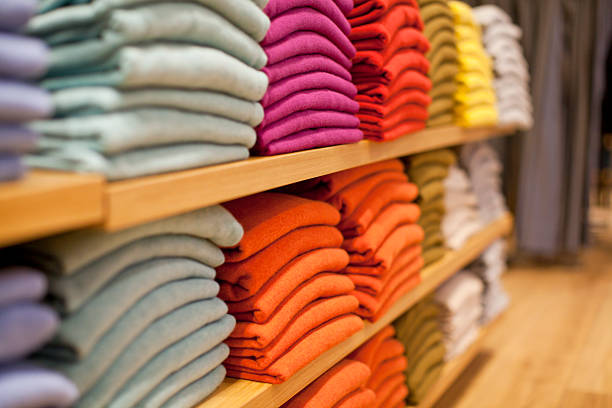
Exploring Women’s Clothes Shops: A Guide to Style, Trends, and Shopping Smarts
Share
Shopping for women’s clothing is more than just a necessity; it’s an experience, an expression of individuality, and a journey through the ever-evolving world of fashion. Women’s clothes shops come in all shapes and sizes, offering a diverse range of styles, price points, and shopping experiences. Whether you’re hunting for a timeless wardrobe staple, a trendy piece to elevate your outfit, or something in between, there’s a store out there to meet your needs.
The Evolution of Women’s Clothes Shops
Historically, clothing shops were tailored to specific social classes and genders, often reflecting societal norms and expectations. Over time, the advent of department stores and boutiques revolutionized how women shopped. These spaces not only provided access to a variety of styles but also created a culture of leisure and self-expression.
Today, the landscape is even more diverse, ranging from high-end luxury boutiques to budget-friendly chain stores, and from online retailers to local artisan markets. The rise of sustainable and ethical fashion has also carved out a niche for eco-conscious shoppers, making it easier than ever to align purchases with personal values.
Types of Women’s Clothes Shops
-
High-End Boutiques These exclusive stores often feature designer labels and limited-edition collections. Shopping in such boutiques is an experience marked by personalized service and luxurious ambiance. Perfect for special occasions or investment pieces, these shops cater to those looking for high-quality and unique items.
-
Fast Fashion Retailers Popular chains like Zara, H&M, and Forever 21 offer trendy, affordable clothing that’s constantly updated to reflect the latest fashion trends. While these stores make fashion accessible to the masses, shoppers are increasingly aware of the environmental impact of fast fashion.
-
Department Stores Stores like Macy’s, Nordstrom, and Debenhams provide a one-stop shopping experience. With a wide range of brands and price points under one roof, department stores are ideal for shoppers seeking variety and convenience.
-
Vintage and Thrift Stores For those who love a good treasure hunt, vintage and thrift stores offer unique, pre-loved items that add character to any wardrobe. These shops are also a sustainable choice, promoting the reuse and recycling of clothing.
-
Online Retailers E-commerce giants like ASOS, Shein, and Net-a-Porter have revolutionized how women shop for clothes. With extensive catalogs, easy returns, and global shipping, online shopping offers unmatched convenience.
-
Local and Artisan Shops These stores often feature handcrafted or locally-made clothing, providing a personal touch and supporting small businesses. Shoppers can find unique items that often tell a story, adding depth to their fashion choices.
Current Trends in Women’s Fashion
Fashion is constantly evolving, influenced by culture, technology, and global events. Here are some trends shaping the women’s fashion industry:
-
Sustainability Eco-friendly materials, ethical production methods, and transparent supply chains are becoming standard expectations. Brands like Reformation and Patagonia lead the way, showing that fashion can be both stylish and responsible.
-
Gender-Neutral Clothing Breaking away from traditional gender norms, many brands now offer unisex clothing lines that focus on comfort and functionality.
-
Comfort-Driven Styles The pandemic’s influence on fashion is evident in the rise of loungewear, athleisure, and oversized silhouettes, blending style with practicality.
-
Tech-Integrated Fashion Smart textiles and wearable technology, such as jackets with built-in heaters or dresses with LED designs, are making their mark on the industry.
-
Retro Revivals Nostalgia continues to drive fashion, with styles from the ‘70s, ’80s, and ’90s making comebacks in updated forms.
Tips for Shopping Smart
Navigating the myriad options in women’s clothes shops can be overwhelming. Here are some tips to ensure a satisfying shopping experience:
-
Know Your Style Understanding your personal style and what works for your body type will help you make confident choices and avoid impulse buys.
-
Set a Budget Decide on a spending limit before hitting the shops to prevent overspending.
-
Research Before You Shop Check out online reviews, social media, and lookbooks to identify stores that align with your preferences.
-
Try Before You Buy Whenever possible, try on clothes to check the fit and feel. For online shopping, familiarize yourself with the retailer’s return policy.
-
Invest in Staples Spend more on high-quality basics like jeans, blazers, and white shirts. These pieces form the foundation of any wardrobe.
-
Experiment with Trends Incorporate trendy items sparingly to keep your wardrobe fresh without sacrificing timelessness.
-
Support Sustainable Brands Prioritize brands that are transparent about their practices and committed to reducing their environmental impact.
The Role of Technology in Women’s Clothes Shops
Technology has significantly transformed how women shop for clothes. Augmented reality (AR) fitting rooms, AI-driven style recommendations, and mobile apps have enhanced the shopping experience, making it more personalized and convenient. Social media platforms like Instagram and TikTok also play a pivotal role in shaping trends and influencing purchasing decisions.
The Joy of Shopping Local
While big brands dominate the market, there’s something special about shopping at local women’s clothes shops. These stores often showcase regional talent and craftsmanship, offering a unique array of items that reflect local culture. Supporting these businesses not only boosts the local economy but also fosters a sense of community.
Challenges in the Industry
The women’s clothing industry is not without its challenges. Issues like size inclusivity, labor exploitation, and the environmental impact of production continue to be areas of concern. Consumers can drive change by advocating for fair practices and supporting brands that align with ethical standards.
Final Thoughts
Women’s clothes shops are more than just places to buy clothing; they’re hubs of creativity, culture, and community. Whether you’re exploring a high-end boutique, a thrift store, or an online platform, each shopping experience has the potential to inspire and empower. By making thoughtful choices and embracing diverse styles, shoppers can curate wardrobes that are as unique as they are.
